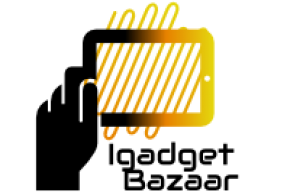Wellhealth is a premier destination for valuable well-being advice in Hindi. The platform is dedicated to supporting individuals in establishing healthy relationships with food by offering practical and easy-to-follow tips. Novella, a driving force behind Wellhealth, combines her passion for providing evidence-based nutrition and health education with her love for food and culture. She curates consumer-centric content for various brands and publications. As a food enthusiast and avid traveler, she is always on the lookout for new flavors and diverse culinary experiences. In her leisure time, you’ll often find her uncovering hidden culinary treasures and enjoying the outdoors while hiking local trails.
The burning question on many minds is how to shed belly fat quickly. While there’s no magic solution to make belly fat vanish instantly, there are nutritional choices, exercises, and lifestyle adjustments that can contribute to its reduction. This guide will help you understand what belly fat is and explore methods to potentially diminish it over time.
Also Read: Healthy life wellhealthorganic
According to well health tips in hindi wellhealth: What Is Belly Fat, and Is It a Health Concern?
Belly fat, scientifically known as visceral fat, is the layer of fat beneath the abdominal muscles. Due to its strategic location around vital organs, belly fat serves as an energy source but can also release harmful toxins and hormones. When fat cells multiply excessively or enlarge, they can produce toxins that increase the risk of chronic inflammation, diabetes, heart disease, and cancer. Consequently, belly fat can be more hazardous than subcutaneous fat, the fat found just beneath the skin.
However, what is commonly referred to as “belly fat” may, in some cases, actually be bloating or water retention rather than fat accumulation. Read on to discover steps for losing stomach fat in a healthy and sustainable manner, without resorting to restrictive fad diets.
Also Read: wellhealth how to build muscle tag
What Should You Eat to Reduce Belly Fat?
There is no single, definitive diet that exclusively targets belly fat. To reduce belly fat effectively, it’s important to consider meal timing, portion sizes, and the nutritional quality of your food. This approach can help you maintain a healthy weight, minimize visceral fat, and alleviate uncomfortable bloating. Here are some key tips to kickstart your journey to a healthier belly:
-
Avoid Bloating Triggers:
Certain carbohydrates are poorly absorbed in the intestines and can lead to gas and bloating. Common culprits include refined carbohydrates and simple sugars, often found in processed foods with added sugars. Excessive sodium intake can also cause bloating due to water retention.
Opt for freshly prepared foods as much as possible to reduce your consumption of processed, packaged foods that can induce belly bloating. For instance, replace a sugary cereal with a Green Smoothie made from fresh fruits and vegetables to kickstart your day in a healthier way.
-
Harness the Power of Protein:
Protein plays a dual role in your quest to trim belly fat. It increases muscle mass and metabolism while helping curb hunger. Research indicates that a high-protein diet can boost thermogenesis, potentially leading to increased calorie burning. Additionally, protein consumption may result in greater post-meal satisfaction, helping you consume fewer calories later in the day. Consider options like a Chipotle Chicken Quinoa Burrito Bowl for a satisfying and filling lunch choice.
-
Prioritize Fiber:
Fiber is a type of carbohydrate that your body can’t digest, and it plays a role in regulating your body’s use of sugar as it gradually moves through your digestive system. Boosting your daily fiber intake can enhance satisfaction after meals, stabilize blood sugar levels, and ultimately reduce the total calorie intake for the day.
Aim to incorporate at least 25 grams of fiber into your daily diet when working to shed belly fat. Foods rich in fiber include lentils, beans, apples, pears (with the skin), nuts, seeds, and cruciferous vegetables like broccoli and Brussels sprouts. Try a recipe like Tabbouleh with Chickpeas for a fiber-packed side dish or a standalone meal.
Which Exercises Can Help Reduce Belly Fat?
In an ideal world, we could selectively target specific areas of our bodies to burn calories, but that’s not how it works. Nevertheless, certain exercises are particularly effective at reducing fat in the belly region and throughout the body. Here are a few exercises to consider:
-
Incline Running:
If you typically use the treadmill for your warm-up or cardio workouts, try increasing the incline. Running on an incline burns more calories than running on a flat surface and can help build muscle simultaneously. The number of additional calories burned on an incline depends on your speed and body weight. You can also incorporate hill-based workouts outdoors.
-
High-Intensity Interval Training (HIIT):
Instead of long, low-intensity cardio workouts, consider HIIT (High-Intensity Interval Training). This approach involves intense, fast-paced intervals that leave you exhausted after a 20- to 30-minute session. HIIT can increase the afterburn effect, causing your body to continue burning calories long after your workout ends. You can alternate between 30-second intervals of various exercises, with brief rest periods in between, as long as the exercises engage different muscle groups.
-
Side Planks:
Toning your abdominal muscles is essential when aiming to reduce belly fat. To add more challenge to a traditional plank routine, include side planks:
- Position yourself on your left forearm and stack your right foot on top of your left foot.
- Hold this position for 60 seconds before switching sides.
- Engaging only two points of contact instead of four intensifies your core workout and targets your obliques.
What Lifestyle Changes Can Help Reduce Belly Fat?
-
Prioritize Sleep:
Inadequate or excessive sleep can disrupt your stress and hormonal regulation, potentially leading to weight gain. A single night of sleep deprivation can elevate ghrelin levels (a hormone that stimulates hunger), increasing the likelihood of overeating the following day. Insufficient sleep can also lead to daytime fatigue and reduced physical activity, contributing to weight gain.
-
Stay Hydrated:
Dehydration can make it challenging to distinguish between hunger and thirst. If you’re craving a mid-day snack, have a glass of water and wait a few minutes before reassessing your true hunger. Proper hydration helps food move through your digestive system, reducing feelings of bloating. Carry a water bottle with you throughout the day and add cucumber slices or fresh fruit for added flavor.
-
Never Skip Meals:
Skipping a meal to reduce your daily calorie intake might seem like a good strategy. However, it usually backfires. When you skip meals, you may experience excessive hunger, leading to cravings for less nutritious foods and overeating. Eating faster than usual after skipping a meal can also prevent you from recognizing fullness cues, resulting in overconsumption.
In Conclusion:
Regrettably, there’s no quick-fix solution for belly fat reduction. Nonetheless, there are steps you can take to facilitate the process. Mindful lifestyle modifications and a commitment to changing your eating and exercise habits over time are your best allies. With patience and dedication, you can embark on a journey to a healthier version of yourself.



